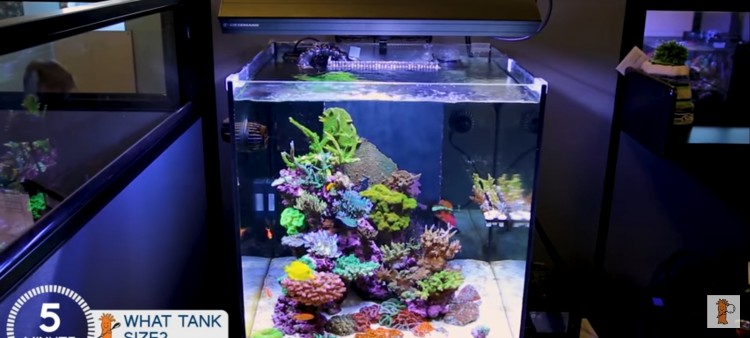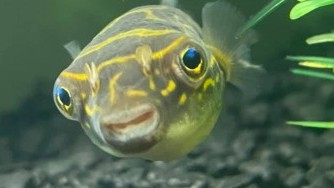The Secret of Selecting the Perfect Size Tank for Your First Saltwater Aquarium
- Sep 06, 2021
- Anshika Mishra
- 295 0 0

In this article, we will be answering the question of a good-sized aquarium for your saltwater reef tank? As a new reefer, you might be confused about what size tank must be ideal for you/ though there are still some debates, a waste majority of people have settled on some common size that newer reefers tend to be happy with.
Best is a tricky word because it means completely different for everyone, but in this case, we believe best is the balance of cost versus success rates. The fact is that larger tanks often have higher success rates but are also more expensive on various fronts.
Why Larger Tanks Have More Success
Larger tanks have higher success rates for two reasons:
Dilution
New reefers will make inevitable, sometimes predictable, mistakes. The effect of overfeeding or over design, equipment failure, or some accidental contaminants can be significant in 25-gallons. Still, the same mistake is half as significant in 60-gallons and even completely insignificant at 120- or 180-gallon tanks. Changes to the water, even things as simple as temperature, are way slower in larger bodies of water.
And while larger tanks are the most costly, the amount of maintenance measure in time between a 60, 120, and 180-gallon tank is not dramatically different.
Upgrade Factor
The other reason is larger tanks have a higher success rate and, in many cases, are cheaper, which is the upgrade factor. Succesful smaller tanks in those first six to 24 months probably have an upgrade factor of 3:1. Many people invest in success, and the thing they like and successful smaller tanks often get rapidly upgraded or result in a second larger tank.
Whereas with a larger first tank like a 93-square 120 or 180-gallons, reefers tend to be happy with these sizes for 5+ years. It sometimes also end up being their forever tanks, with a low upgrade or second tank ratio in the first few years.
Investment up front often results in as much as half the cost long term. The flip since is that obviously upfront is more. Not just the tank, but much of the equipment is larger, and the tank is twice the size, often get twice the amount of fish and corals.
One of the rare things in the reefing communing is that: With your first tank, get as big as your budget, space, or room allows. The maintenance between these common new-sized tanks doesn't change all that much, mostly related to cost and success.
Tank With Higher Success
These are the five tank sizes that have the highest success rates:
- 40-gallon breeder
- 60-gallon cube
- 93-gallon square
- 120-gallon Rectangle
- 180-gallon Rectangle
40-gallon Breeder Tank
The 40-gallon breeder is probably the most popular first reef tank for a newer reason for a few reasons. First, it is not expensive; the shape is nearly as deep front to back as tall and supports all kinds of aquascapes and coral growth that most reefers want. Also, the 40-gallon size is about the minimum size version of utilitarian fish critical to new reefer success.
Combined with the dilution factor where larger is often easier, we find that 40-gallons have a higher success rate for reefer's first tanks than smaller ones.
60-gallon Cube Tank
Outside that, most reefers will agree that a new tank owner is often happiest when the tank is as deep front to back as it is, which again provides interesting aquascapes, easier maintenance, and room for coral growth. Therefore 60-gallon cube is also the ideal tank that is two feet tall, deep, and wide.
The nice thing about this tank is it only required one light. So, with the tank size might be more than the breeder, the total cost of the tank setup may be somewhat close.
120- and 180-Gallon Tanks
After that, the suggestion is to get something wider. The same two feet tank and deep front to back, four feet wide with the 120-gallon, or size-feet wide with the 180-gallon.
93-gallon Square
The last common option is deeper front to back than it is tall is a 93-gallon square, which can be lit with one good light. The 30-inches in each direction with three separate but equal 30-inch viewing panes create an awesome look.
Final Suggestion
But, if you are still confused, we suggest you go with the 40-gallon breeder. It is the most popular for a reason. It is at a low cost and a manageable size. The above size is perfect when space is a concern. Whereas the 120 and 180-gallon are much less common, starting to first tanks sizes, but that said, the 120- and 180-gallon is very likely to be the more upgrade sizes.
So, after you have got your feet wet and have some success, you can wisely choose what suits your needs, room, and budget the best!






About author